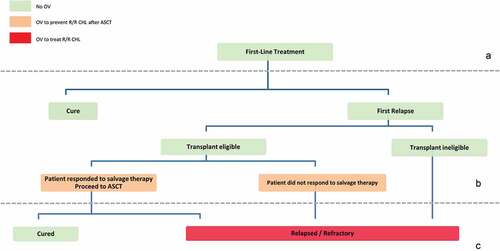Figures & data
Table 1. Overview of oncolytic viruses characteristics in ongoing drug development in oncology.Citation31
Figure 1. Mechanisms of action of oncolytic viruses as indicators of anti-tumoral activity in Hodgkin lymphoma

Table 2. Summary of safety and efficacy results for oncolytic viral approaches to treat relapsed or refractory Hodgkin lymphoma in clinical trials
Figure 2. Choosing virotherapy for the treatment of relapsed and refractory classical Hodgkin lymphoma

